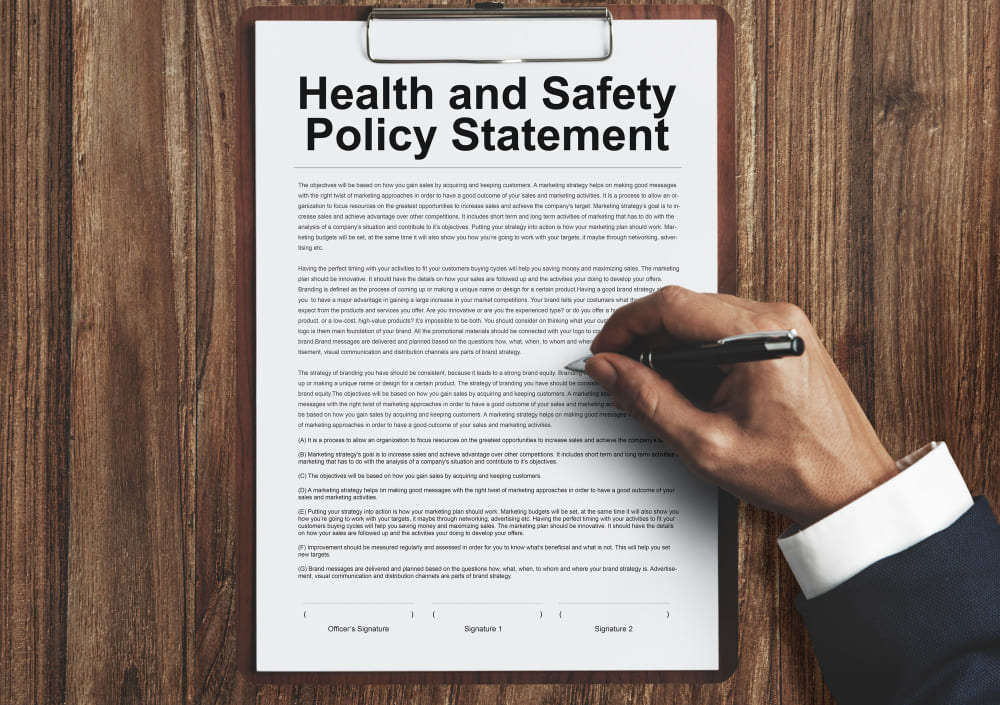safety and occupational health
Security, safety, and occupational health procedures are among the basics that must be available in every work environment. The worker or employee must feel that he is working in a safe environment that does not have any risks to his health or life to be able to work and produce in the best possible way. Therefore, companies and factories must maintain The safety of employees and workers in the workplace and the application of preventive measures to protect them, through:
Keeping the place safe and free from dangers
The equipment is safe and free from causes of injuries or accidents.
Safety of the way the employee performs his work.
Nevertheless, the culture circulated about the importance of these procedures and the mechanism of their application, as well as the rules assigned to them, is still in a space that does not amount to being within the general or popular culture among citizens, and from here comes our role, as we help educate you about security, safety and occupational health procedures in detail, starting with:
The concept of professional ethics
Sources of professional ethics
The concept of occupational safety and health rules
The importance of occupational safety and health rules
Occupational safety and health procedures
How can you provide a safe work environment?

The concept of professional ethics and its sources
The concept of professional ethics or work ethics refers to all the principles, customs, behaviors, and policies that ensure the provision of a safe work environment and make it more suitable for production and development.
Professional ethics is characterized as a set of rules or principles that are close to custom than to law so that these ethics stem from conscience and good personality before they stem from penalties or rules regulating them.
Each profession has a set of ethics and principles that regulate its workflow, starting with the ethics of the doctor’s profession and preventing him from disclosing patients’ secrets, through the rules governing dealing with offenders in the legal profession, disclosing clients’ secrets in different professions, obtaining bribes, conflicts of interest, or achieving a corresponding profit. Harm the public interest or the environment as a whole.
All these images are included in the process of regulating the ethics of the profession or work, so that these rules prevent the desecration of the honor of those working in it, and help in drawing a good stereotype for those who practice it, whether from a social or professional point of view.
Sources of professional ethics:
Professional ethics has a set of different sources, but three specific sources are the most famous and most influential about the formation of the collective mind, and they are as follows:
The individual's value system:
They are values that are acquired from childhood and grow with the person and vary with the diversity of the experiences he is subjected to. They are the values and principles he received in his upbringing, as well as the norms he learned and the people who influenced him, as well as the role of religion and society in shaping his identity and his view of the outside world.
The prevailing system of values in society
It is a set of values and principles on which the collective mind of society gathered, spread within it, and became an integral part of its cultural and societal identity, as well as another form of the formal law, which is the law of those who deviate from it receive social rejection and exclusion.
Professional ethics regulations
They are the organizing rules issued by professional syndicates and labor organizations to regulate the general behavior of workers in the field and prevent any deviations that may appear in its form, whether these deviations are internal or external, committed by the youngest worker in the field, or committed by chiefs and notables of this profession. Anyone who violates these regulations is subject to either appropriate legal punishment or exposure to expulsion from the syndicate and banning him from practicing the profession permanently.
Workers in these professions adhere to what is called work ethics or professional ethics, not only out of a desire to obtain societal privileges but also out of fear of the consequences of non-compliance with them, whether through the application of company regulations or submission to the law. In return, employees expect their institutions to maintain their safety and health without Harming them or underestimating their right in any way, and here comes the role of the company in applying what is known as the rules of occupational safety and health as follows:

The concept of occupational safety and health rules
Occupational safety and health rules are defined as all the measures taken by the institution to preserve the lives of those who deal with it, starting with the safety of its employees and preserving their physical and psychological health, through the customers to whom these services are provided and preventing their injury from any danger.
Occupational safety and health rules derive their strength from being another facet of the regulations for the work environment, as they can be described as a set of regulatory procedures and rules, which are implemented by an agreed legislative and legal framework so that they ultimately aim to preserve the lives of workers and customers from exposure to danger. or injury.
The importance of occupational safety and health rules:
Occupational safety and health have a set of advantages that make it a triple-double win, whether this is for customers, employees, or even the organization, as it helps to:
Existence of procedures and plans to maintain the safety and health of employees and workers as well as customers and put them at the forefront of priorities.
Reducing the number of injuries and accidents in the workplace
Protecting workers, preserving their health, and enhancing their ability to perform work, in a way that is ultimately in the interest of work.
The existence of a safe work environment makes employees and workers able to perform their jobs in the best possible manner.
Protect equipment and tools used in the workplace from damage or loss
Spread the spirit of reassurance in the hearts of employees
Increasing production, not disrupting work, and enhancing the efficiency of workers
Create an attractive work environment capable of attracting new workers.
Preserving the lives of customers and not risking the reputation of the brand if it is exposed to any the hostile media attacks from competitors.
Gaining the trust of customers as it maintains the quality of its products as well as the lives of its employees, which makes it characterized by ideal professionalism.
Paying attention to the rules of occupational safety and health helps in enhancing the psychological safety of workers, which doubles their productivity as well as their job loyalty rate to the institution.



